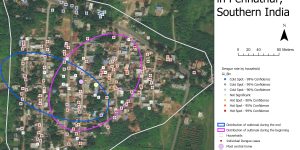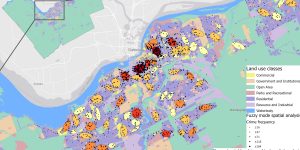Explore the Spatial Pattern of Dengue Fever in Pennathur, Southern India
Dengue Fever is a potentially fatal illness that is spread by mosquitoes. The spatial statistics tools in ArcGIS was used to better understand the spatial pattern of Dengue Fever in Pennathur, a village in Southern India.


